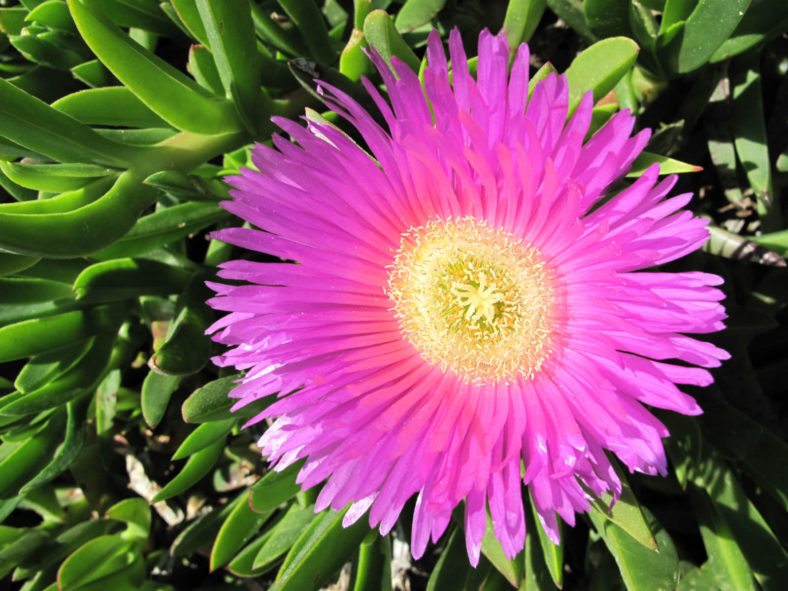Carpobrotus is a genus of ground-creeping plants with thick, fleshy leaves and large daisy-like flowers. The name refers to edible fruits. It comes from the Ancient Greek "karpos," meaning "fruit," and "brota," meaning "edible." Plants in the genus are commonly known as Pigface, Ice Plant, or Hottentot Plant.
The genus includes about 20 accepted species. Most are South African endemics, but there are at least 4 Australian species and one South American.
Various Carpobrotus species are invasive introduced species in suitable climates throughout the world. Their harm is variable and sometimes hotly debated when balanced against their value as firebreaks and food for wildlife.
Growing Conditions
Carpobrotus are perennial plants in their chosen zones but grow as annual plants in colder areas. The best temperature range for these succulents is between 40 and 100 °F (4 and 38 °C). However, some protection from the sun's scorching rays may be required in higher temperatures.
Growing Carpobrotus plants in planters prevent them from spreading in those areas where that is a concern. Freezing temperatures may cause the plant to die back, but it will resprout in spring in a temperate zone.

General Care
Carpobrotus plants are notoriously unfussy. As long as their soil drains well and is allowed to dry out between watering, and the plants receive pinching or pruning to keep them in shape, there is little more to be done.
The only serious threats to the health of the plants are spittlebugs and some root rots and stem rots. You can avoid the rot by minimizing overhead watering during periods when plants will not dry off before nightfall. The bugs will remove themselves if you spray them with horticultural soap.
Growing Carpobrotus plants in containers is a good idea because you can overwinter them in temperate regions. Cut back the plant, let it dry out, and languish in a warm, sunny location for the winter. In spring, resume regular watering and move the plant to a full-light situation with some protection from burning rays. Gradually reintroduce the plant to temperatures outdoors until it can tolerate a full day outside.
Propagation
Stem cutting is the fastest way to propagate these fast-growing plants. However, seeds are also available, and you may start them indoors at least six weeks before the last frost date.
Links
- Back to genus Carpobrotus
- Succupedia: Browse succulents by Scientific Name, Common Name, Genus, Family, USDA Hardiness Zone, Origin, or cacti by Genus